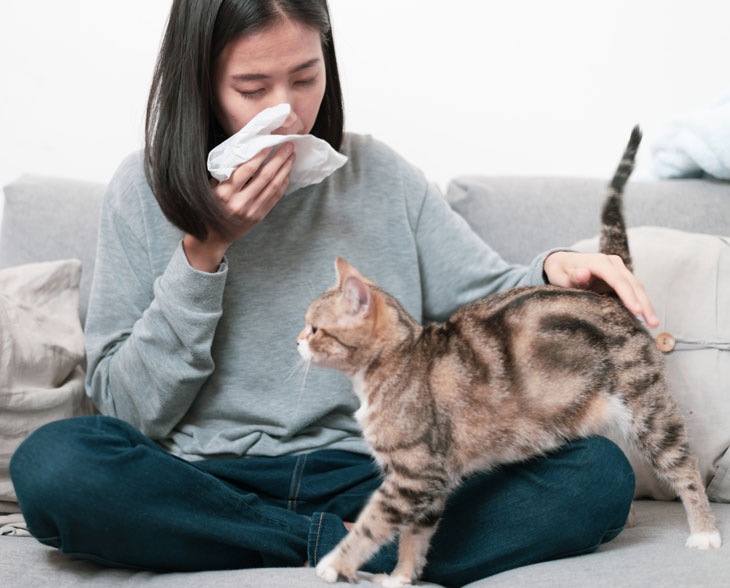Can a Vaccine Make Your Cat Hypoallergenic?

When someone is allergic to cats, it can negatively affect their lives, especially if they or their families love cats and have them in their home.
People try many things to be able to live with cats when they have allergies. They sometimes think having a short-haired cat will work or perhaps a hairless variety. People talk about hypoallergenic breeds of cats.
The truth is there is no hypoallergenic cat. The part that triggers allergies in humans isn't the hair or dander, it's a protein in cats' saliva and oil glands called Fel d 1. All cats have that protein, regardless of their hair variety. Some cats do have less of it, but it's a matter of testing each individual cat to see if you react when you are allergic, and that's not usually very doable.
Lately, science has tackled this issue, trying various methods of developing a way to produce a hypoallergenic cat. Some things that have been tried include:
- Special kibble coated with a substance meant to neutralize Fel d 1
- A vaccine to trick the cat's immune system into thinking Fel d 1 is part of a virus and should be eliminated
- Gene therapy to remove the gene that produces Fel d 1
Special Kibble
Scientists at Purina developed the idea behind special kibble that decreases a cat's Fel d 1 levels.
First, a chicken is injected with Fel d 1 which, rightly, its body sees as an invader and mounts an immune response to. When the hen makes eggs, they contain that antibody.
When egg yolks containing the antibody to Fel d 1 are used to coat cat kibble, a cat's production of Fel d 1 can be decreased significantly. In some cases, it may be enough to help an allergic person living with a cat. There are individual variances, though, including how much Fel d 1 a particular cat makes and how sensitive the allergic person is.
Gene Therapy
Removing the gene that develops Fel d 1 from a cat's DNA is pretty far off from being used as a therapy. However, scientists have been able to accomplish it in a petri dish, so perhaps it's something that we'll see in the distant figure.
Vaccine
Scientists have developed a vaccine for cats that reduces how much Fel d 1 they shed by tricking their immune system into thinking that protein is part of a virus.
The vaccine has been tested and shown to drop cats' production of Fel d 1 and allow allergic owners to be with them more.
The Bottom Line
It will take some more time before a vaccine or gene therapy may be available to decrease cats' Fel d 1 protein levels and help allergic owners.
Purina's LiveClear Allergen Reducing Cat Food is available and may be a good option for some cats and their owners. However, you should talk to your veterinarian to make sure it's right for your cat.
Sources
- (Zhang)
You May Also Like These Articles:
Notice: Ask-a-Vet is an affiliated service for those who wish to speak with a veterinary professional about their pet's specific condition. Initially, a bot will ask questions to determine the general nature of your concern. Then, you will be transferred to a human. There is a charge for the service if you choose to connect to a veterinarian. Ask-a-Vet is not manned by the staff or owners of CatHealth.com, and the advice given should not delay or replace a visit to your veterinarian.




